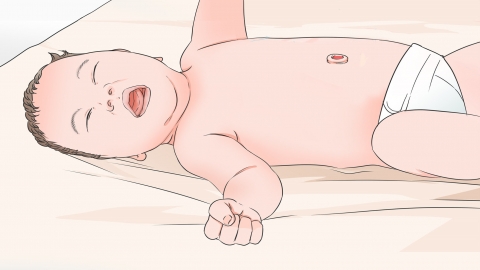What causes a newborn to aspirate amniotic fluid?
In general, amniotic fluid aspiration in newborns may be caused by factors such as rapid labor, swallowing dysfunction, polyhydramnios, respiratory distress syndrome, or congenital tracheal developmental abnormalities. Symptomatic management usually involves general treatment and medication. If any discomfort occurs, prompt medical consultation is recommended for appropriate treatment under a doctor's guidance. Detailed analysis is as follows:

1. Rapid labor
When labor progresses too quickly, the force and frequency of uterine contractions suddenly increase, potentially compressing the fetus rapidly and forcing amniotic fluid into the fetal mouth and nose, causing coughing. Gently patting the back, adjusting the baby's position to help drain the amniotic fluid, and providing appropriate oxygen support to maintain respiratory function can be beneficial.
2. Swallowing dysfunction
Newborns' swallowing function is not yet fully developed, and they may have difficulty coordinating swallowing movements, making aspiration of amniotic fluid more likely. Swallowing exercises, such as using a pacifier to encourage sucking and giving small, frequent sips of warm water to practice swallowing, are recommended. Additionally, feeding speed and volume should be carefully controlled during breastfeeding.
3. Polyhydramnios
Excessive amniotic fluid can cause relative intrauterine space constraints, limiting fetal movement and increasing the risk of intrauterine swallowing or inhalation of excessive amniotic fluid, which may present with symptoms such as abdominal distension and breathing difficulties. Pregnant women should regularly monitor amniotic fluid levels and, if necessary, undergo amnioreduction to reduce the risk of fetal amniotic fluid aspiration.
4. Respiratory distress syndrome
Respiratory distress syndrome is typically caused by insufficient surfactant in the alveoli. This substance helps keep the alveoli open and facilitates oxygen exchange. Components of amniotic fluid may interfere with surfactant production, thereby affecting respiratory function, possibly presenting with symptoms such as rapid breathing and cyanosis. It is recommended to follow medical advice to use medications such as Cefixime Granules, Cefotaxime Sodium for Injection, and Amoxicillin Granules to improve respiratory function.
5. Congenital tracheal developmental abnormalities
Abnormalities in the newborn's airway structure, such as tracheal stenosis or bronchomalacia, can prevent normal drainage of amniotic fluid, increasing the risk of aspiration and presenting with symptoms such as labored breathing and wheezing. It is recommended to use medications such as Ambroxol Oral Solution, Dexamethasone Sodium Phosphate Injection, and Salbutamol Aerosol under medical guidance to relieve airway spasms.
In daily life, parents should closely monitor the newborn's breathing, feeding, and mental status. If any abnormal symptoms occur, prompt medical attention should be sought.
References
[1] Zou Qing, Fang Yuling, Peng Xiaorui, et al. Analysis of factors influencing adverse outcomes in neonates with respiratory distress syndrome. Medical Journal of Chinese People's Health, 2024, 36(21):8-11.
[2] Lin Xiaomei. Prenatal diagnosis and pregnancy outcomes of 219 cases with polyhydramnios [D]. Guangzhou Medical University, 2024.




